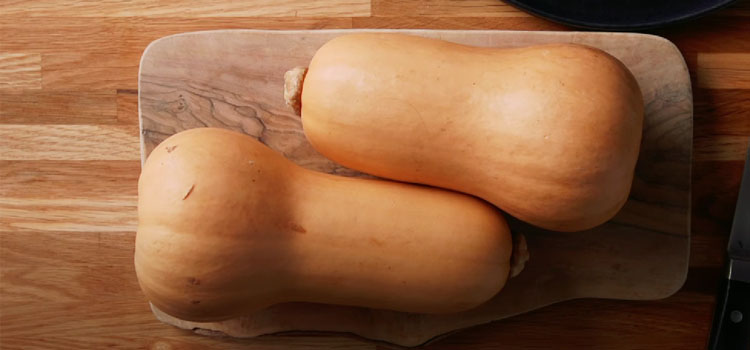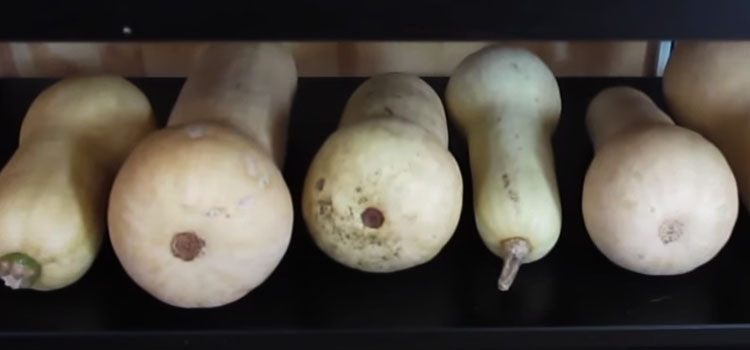Last Updated on September 16, 2024 by Shari Mason
Picture this: a crisp autumn day, the sound of leaves crunching under your feet, and a butternut squash resting on your kitchen counter. The thought of transforming it into a delicious dish puts a grin on your face.
But what if that squash has seen better days? I once faced this dilemma, wondering how to tell if butternut squash is bad.
There is no need for complicated tests; just a few easy tricks to ensure your culinary creations stay fresh and delicious. Read on.
5 Ways To Tell If Butternut Squash is Bad
1. Does It Look Wrinkled or Shriveled?


One of the most apparent ways to tell if butternut squash [1] is bad is by inspecting its appearance.
If you notice that the squash’s skin has become wrinkled or shriveled, it may have passed its prime. Fresh butternut squash should boast a smooth and firm skin.
“While you can find zucchini in markets in most places year-round, allowing you to make everything from breakfast dishes like zucchini and onion frittatas to snacks like zucchini-stuffed crab cakes, the onset of fall marks the beginning of hard squash season.”
– Marcus Samuelsson, Chef
When it starts to develop these telltale signs of dehydration and loss of moisture, it’s a signal that its quality has deteriorated, and it’s best to consider other options for your culinary endeavors.
Also Read:
- Best Tasting Winter Squash
- How To Know If Enoki Mushrooms Are Bad?
- If One Potato Is Rotten, Are They All Bad?
- How To Tell If Shredded Cheese Is Bad?
- Will Butternut Squash Ripen Off The Vine?
2. Is There Mold or Discoloration?
Another unmistakable indicator of butternut squash gone bad is the presence of mold, dark spots, or discoloration on its skin.
When you spot any of these visual cues, it’s a clear sign that the squash has started to deteriorate and may no longer be safe to consume.
Mold and discoloration often signify spoilage and the potential growth of harmful microorganisms.
To ensure the quality and safety of your dishes, it’s wise to steer clear of squash showing these signs and opt for a fresher alternative.
Find out if butternut squash is the same as spaghetti squash here.
3. How Does It Smell?
The sense of smell can be a powerful indicator of butternut squash’s freshness. A good butternut squash should emit a mild and earthy aroma when you sniff it.
However, detecting any sour, fermented, or generally unpleasant odors strongly indicates that the squash has turned sour.
Unpleasant smells often accompany the growth of harmful bacteria [2] or the breakdown of the vegetable.
Hence, relying on your nose to assess the squash’s condition is a valuable step in ensuring the quality and safety of your culinary creations.
4. Is It Heavy for Its Size?


Assessing the weight of butternut squash can provide essential clues about its condition. A fresh and good butternut squash should feel notably heavy for its size.
This weight indicates that it’s packed with moisture and has retained its quality.
On the other hand, if the squash feels lightweight or unusually light, it’s a sign that it might have lost moisture and begun to deteriorate.
While it’s not the sole indicator of freshness, the weight test is a handy way to gauge the squash’s overall condition and decide whether it suits your culinary needs.
5. Check the Flesh
If you still need to figure out the quality of your butternut squash after examining the exterior, a surefire way to determine if it’s gone bad is by checking the flesh.
A fresh butternut squash should have firm, vibrant orange flesh free from any signs of decay. Slice it open and scrutinize the inside.
“When it comes to butternut squash, your senses are your best allies. Trust your eyes, nose, and touch to decipher its freshness. A wrinkled skin, the scent of spoilage, or a lightweight feel – let your senses be the judges of this golden gourd’s quality.”
– Eat Pallet Restaurant & Food Advice
The squash has spoiled if you notice a slimy or mushy texture, an unpleasant odor, or discoloration.
Healthy butternut squash should maintain its firmness and vibrant color inside, ensuring it’s safe and flavorful for your recipes.
FAQs
u003cstrongu003eHow long does butternut squash last?u003c/strongu003e
When stored properly in a cool, dry place, a whole butternut squash lasts approximately 1 to 3 months. u003cbru003eu003cbru003eHowever, once cut or cooked, it’s best to use it within 3 to 5 days and store it in the refrigerator to maintain its freshness.
u003cstrongu003eWhat color should butternut squash be inside?u003c/strongu003e
The inside of a fresh butternut squash should be a vibrant and uniform orange.
Final Thoughts
Determining whether butternut squash is bad or still good is a straightforward process that primarily relies on your senses and visual inspection.
Check for critical indicators: wrinkled or shriveled skin, mold or discoloration, unpleasant odors, a lightweight feel for its size, and checking the flesh for signs of decay.
By paying attention to these cues, you can confidently assess the condition of your butternut squash and make informed decisions when selecting ingredients for your culinary creations.
Ensuring the freshness of your squash is essential for the taste and quality of your dishes and your safety, as spoiled squash can lead to health concerns.
So, trust your senses and make the most of your butternut squash by ensuring it’s at its best.
References:
- https://www.allrecipes.com/recipe/229733/simple-roasted-butternut-squash/
- https://my.clevelandclinic.org/health/articles/24494-bacteria
- Can You Put an AC Unit in the Kitchen? - September 27, 2024
- What Cheese Does Olive Garden Use? Discover Their Signature - September 27, 2024
- How to Cancel a Pizza Hut Order? Quick & Easy Guide - September 24, 2024


